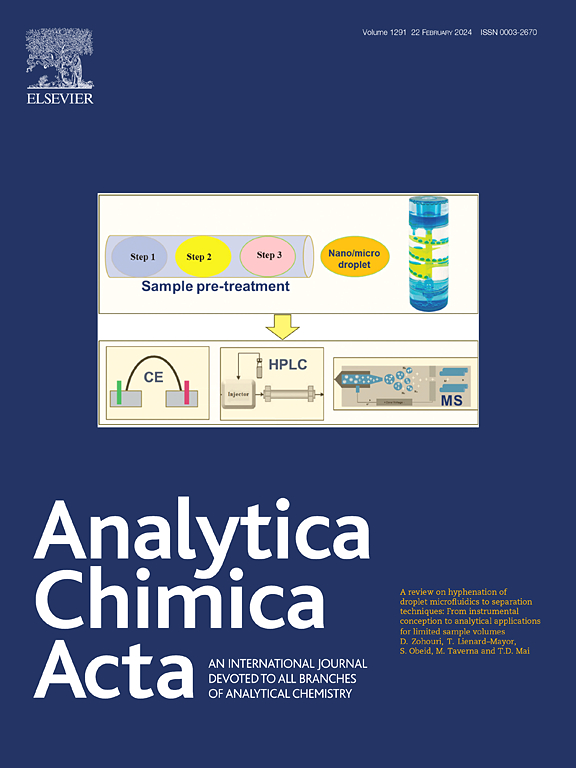Cellular uptake of polystyrene nanoplastics with surface Functionalization: An AIE-based quantitative approach
IF 5.7
2区 化学
Q1 CHEMISTRY, ANALYTICAL
引用次数: 0
Abstract
The increasing prevalence of nanoplastics (NPs) in the environment has raised significant concerns about their potential for bioaccumulation and toxicity. However, most toxicity studies currently focus on pristine polystyrene NPs (PSNPs), overlooking the impact of environmental weathering on their surface chemistry and interactions with biological systems. This study adopts an aggregation-induced emission (AIE)-based approach to quantify how surface functionalization affects cellular uptake, a critical step in assessing NPs toxicity. We synthesized carboxyl (-COOH) and amino (-NH2) functionalized PSNPs through emulsion polymerization, incorporating an AIE fluorescent label to enable precise quantification and to distinguish the NPs from endogenous biomolecules. Using mouse macrophages (RAW264.7) as a model, we demonstrated that surface carboxylation significantly enhanced cellular uptake compared to the original NPs. This enhanced uptake effect is likely due to the increased interaction between the functionalized NPs and the cell surface receptors. Quantitative fluorescence analysis and flow cytometry revealed that PSNP-COOH exhibited the highest uptake and the most pronounced effects on cell toxicity. This AIE-based approach offers a more environmentally relevant model for evaluating NPs toxicity, understanding the importance of considering surface modifications when assessing the biological effects of NP exposure.

聚苯乙烯纳米塑料的细胞吸收与表面功能化:基于人工智能的定量方法
纳米塑料(NPs)在环境中的日益流行引起了人们对其潜在的生物蓄积性和毒性的极大关注。然而,目前大多数毒性研究都集中在原始聚苯乙烯NPs (psnp)上,忽视了环境风化对其表面化学和与生物系统相互作用的影响。本研究采用基于聚集诱导发射(AIE)的方法来量化表面功能化如何影响细胞摄取,这是评估NPs毒性的关键步骤。我们通过乳液聚合合成羧基(-COOH)和氨基(-NH2)功能化的psnp,并结合AIE荧光标记进行精确定量,并将NPs与内源性生物分子区分。以小鼠巨噬细胞(RAW264.7)为模型,我们证明了与原始NPs相比,表面羧化显著增强了细胞摄取。这种增强的摄取效应可能是由于功能化的NPs与细胞表面受体之间的相互作用增加。荧光定量分析和流式细胞术显示,PSNP-COOH的摄取率最高,对细胞毒性的影响最显著。这种基于ai的方法为评估NP毒性提供了一个更环保的模型,理解了在评估NP暴露的生物效应时考虑表面修饰的重要性。
本文章由计算机程序翻译,如有差异,请以英文原文为准。
求助全文
约1分钟内获得全文
求助全文
来源期刊

Analytica Chimica Acta
化学-分析化学
CiteScore
10.40
自引率
6.50%
发文量
1081
审稿时长
38 days
期刊介绍:
Analytica Chimica Acta has an open access mirror journal Analytica Chimica Acta: X, sharing the same aims and scope, editorial team, submission system and rigorous peer review.
Analytica Chimica Acta provides a forum for the rapid publication of original research, and critical, comprehensive reviews dealing with all aspects of fundamental and applied modern analytical chemistry. The journal welcomes the submission of research papers which report studies concerning the development of new and significant analytical methodologies. In determining the suitability of submitted articles for publication, particular scrutiny will be placed on the degree of novelty and impact of the research and the extent to which it adds to the existing body of knowledge in analytical chemistry.
 求助内容:
求助内容: 应助结果提醒方式:
应助结果提醒方式:


